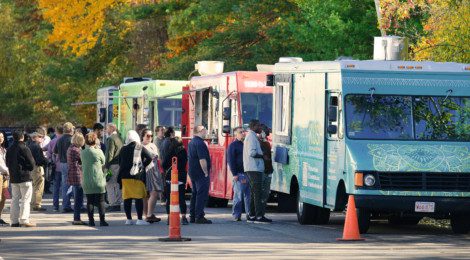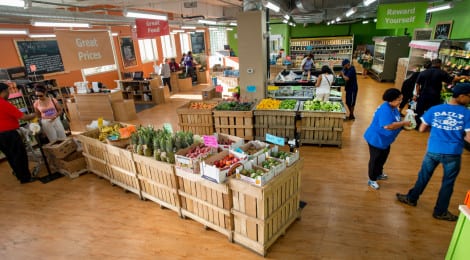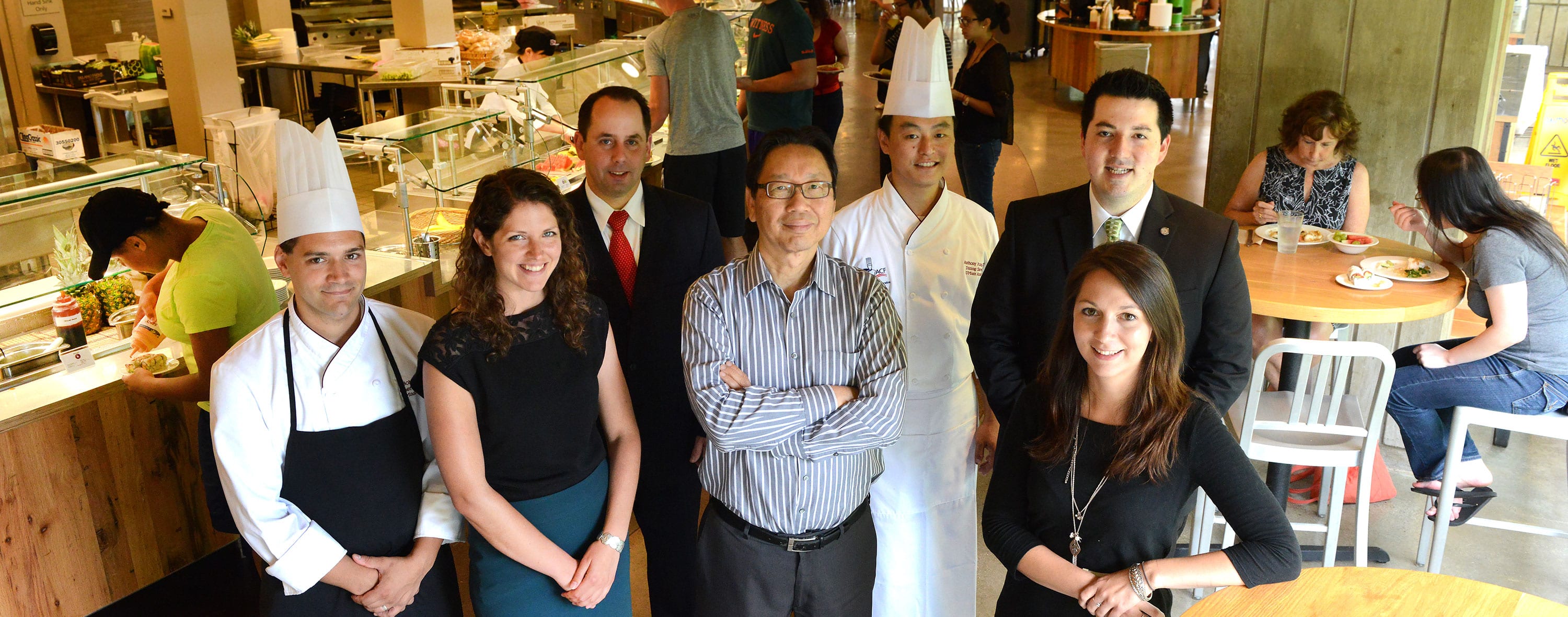
Grantee Profile
UMass Dining
UMass Amherst Dining is the largest university foodservice program in the nation, serving over 45,000 meals per day to 17,000 students. Because of the dining service program’s scale, UMass Dining is in a prime position to have an impact on the growth of the New England food system.
Ken Toong, executive director of UMass Auxiliary Enterprises, under which UMass Dining is housed, feels that they have a unique responsibility.
“We are the largest foodservice program not only in New England but in the nation,” Ken says, “so, we have a responsibility and it’s the right thing to do to support the regional food system.”
In a bold statement, UMass Dining has recently renovated one of its four campus dining halls, Hampshire Dining Commons, to become a model for wellness and sustainability.
“We want Hampshire Dining Commons to be a model not only for our other three dining commons but for dining commons across the region and even across the country,” says Joanna Benoit, the sustainable food systems coordinator for UMass Dining.
Creating a new standard for university dining programs is no easy task. There is no roadmap for the work they are undertaking, so they are constantly experimenting with innovative solutions.
Rachel Dutton, sustainability manager of UMass Auxiliary Enterprises, sees the uncertain path as an opportunity. “We’re using Hampshire Dining Commons as a testing ground,” she says. “We’re trying to figure out where sustainability, healthy food, and flavor all converge.”
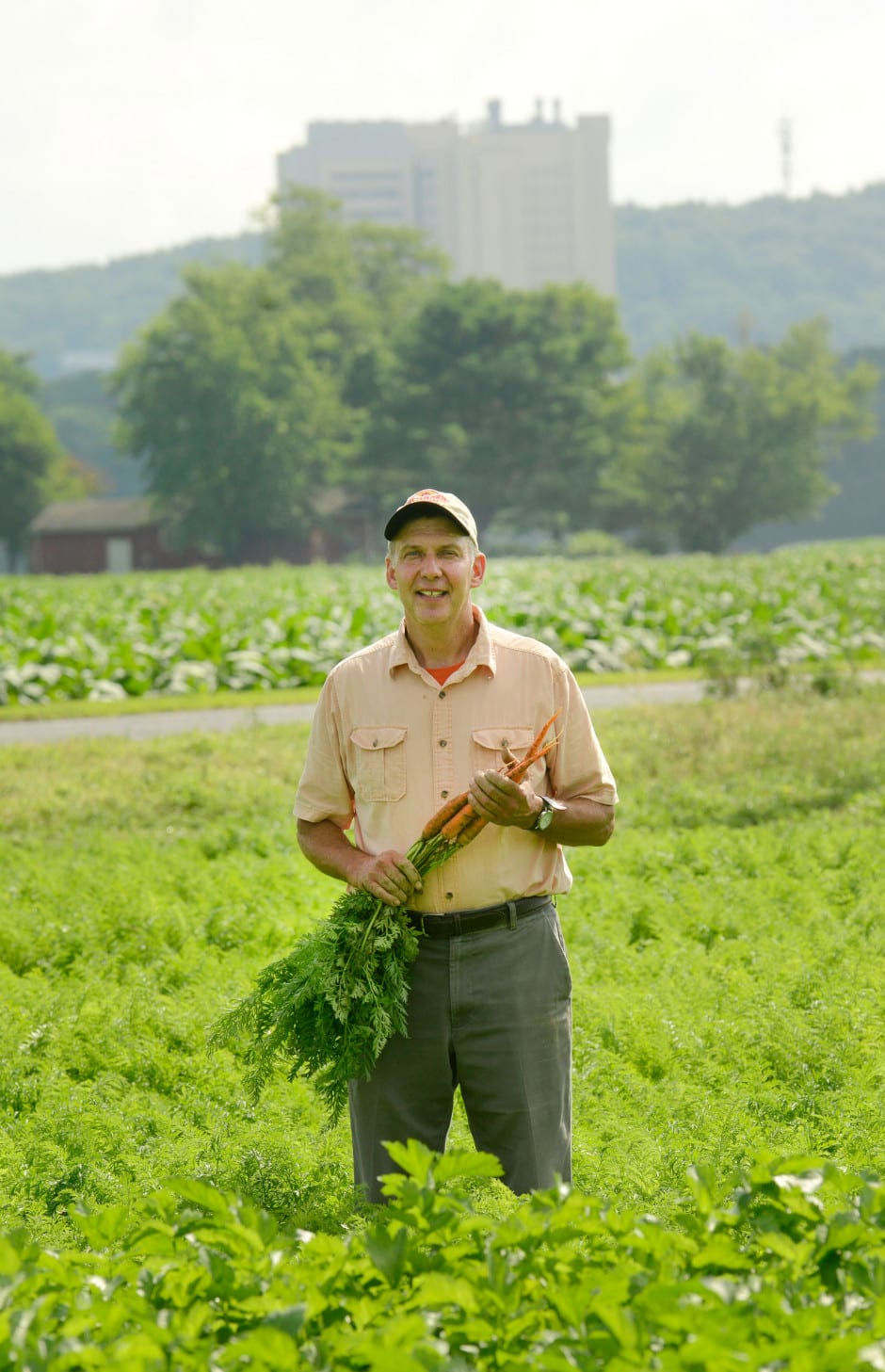
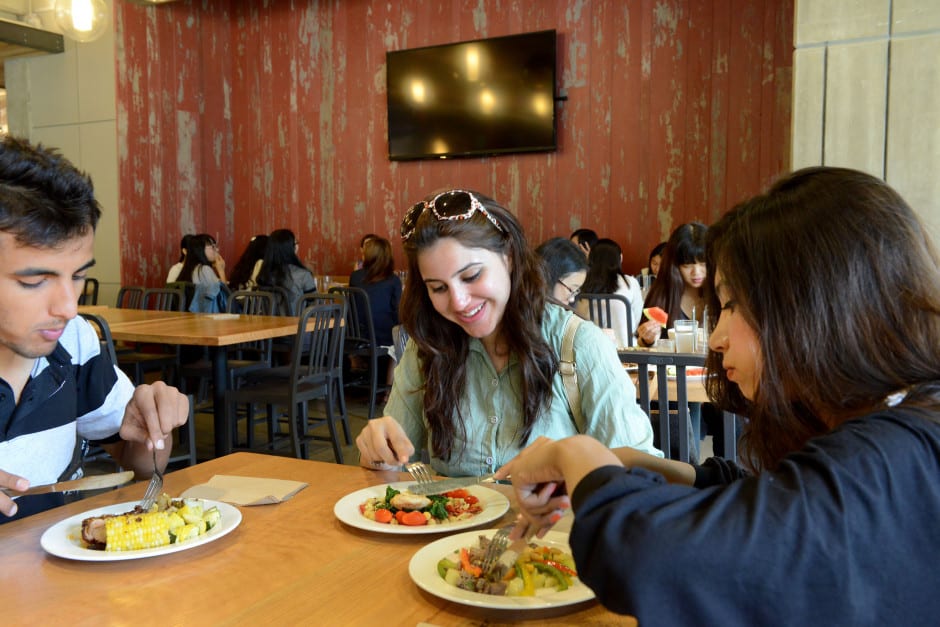
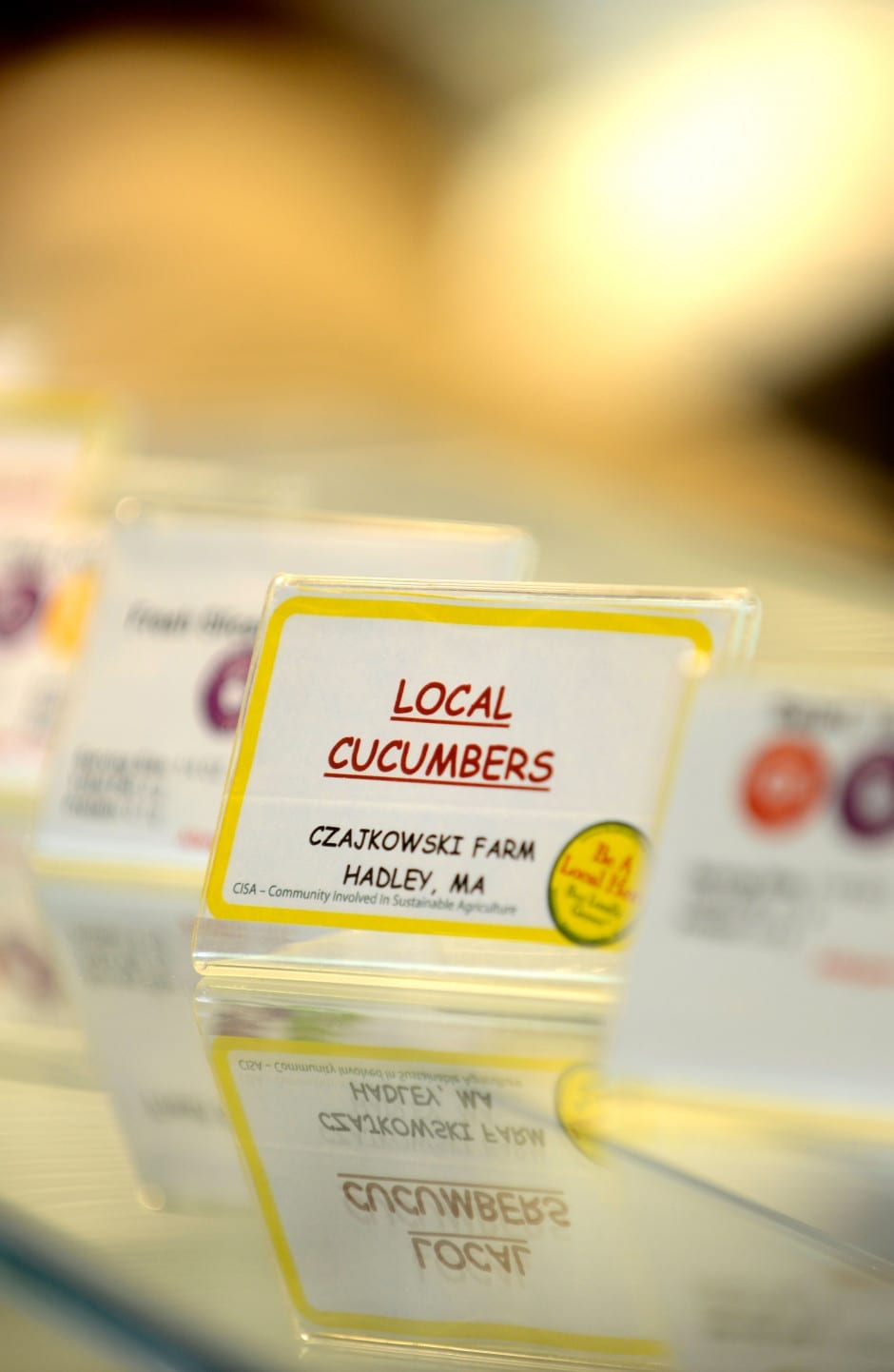
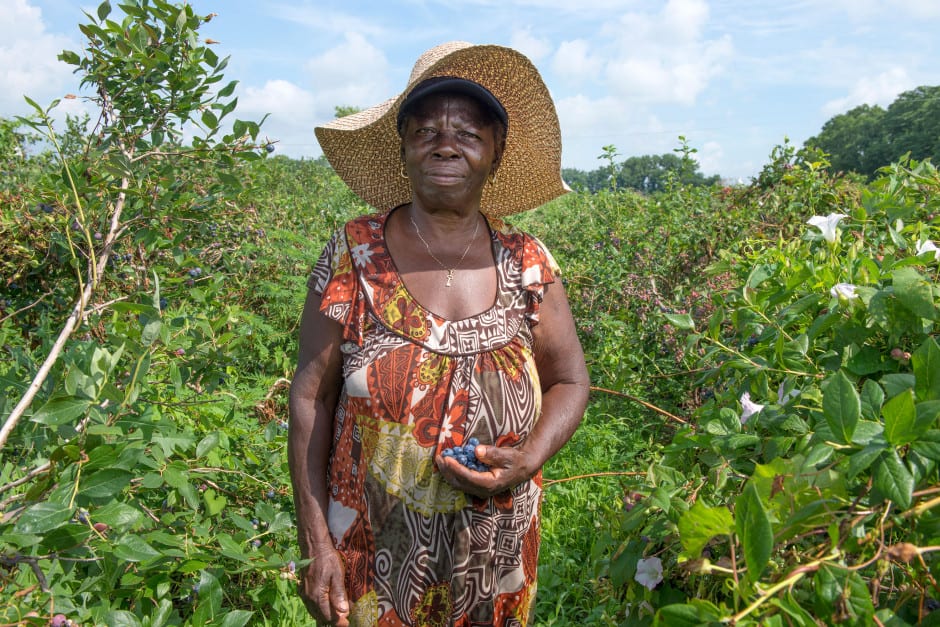
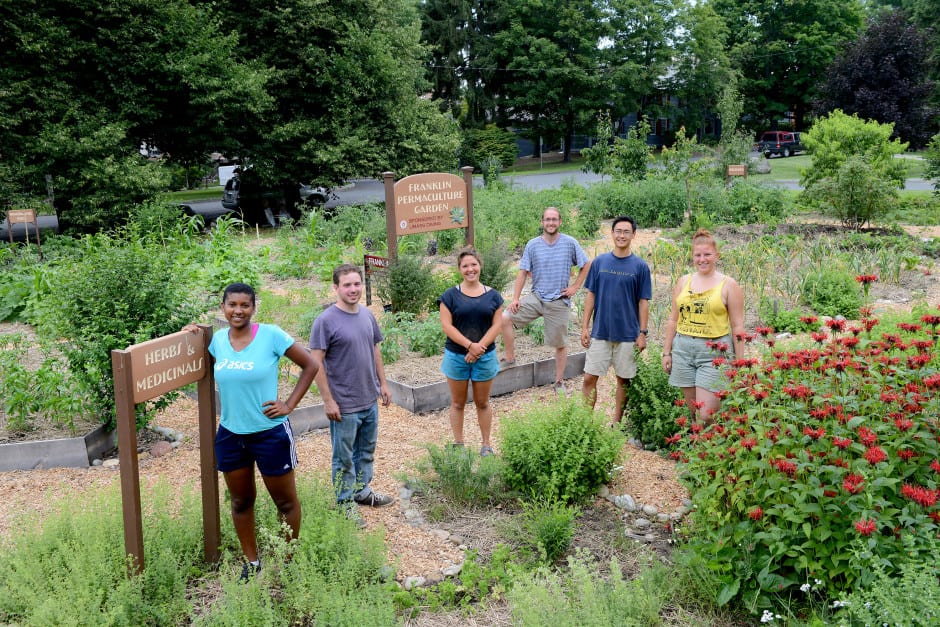
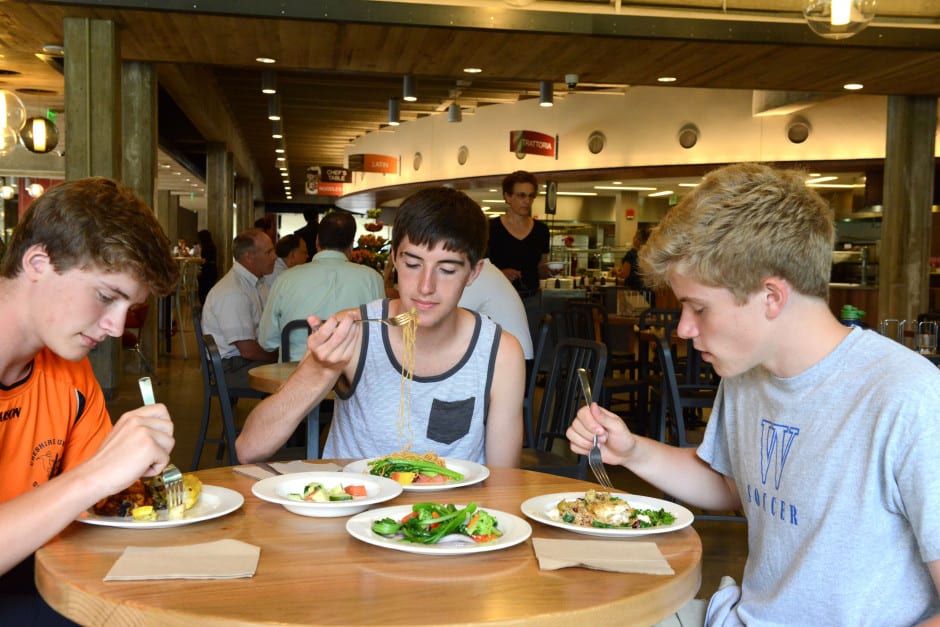
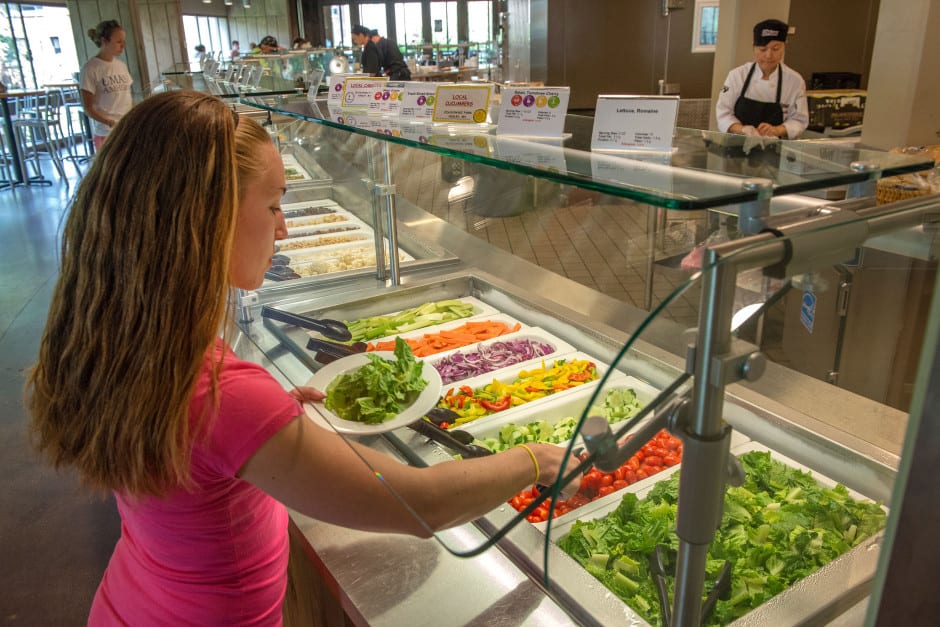
One of the biggest obstacles that UMass Dining has had to traverse is the logistical challenge of sourcing more locally produced food. In a creative solution, UMass Dining has partnered with Joe Czajkowski, the owner of a farm located just minutes from the Amherst campus. Rather than UMass Dining creating contracts with each of the local farms from whom it sources, Czajkowski Farm aggregates produce from all of them and then sells to UMass through a single contract.
“Working with Joe has allowed us to streamline the process,” according to Ken, “and the price is very competitive with conventional produce.” As a result of their partnership with Czajkowski Farm, they have dramatically increased their procurement of local food to over $1 million annually.
However, sourcing locally isn’t enough for UMass Dining. They are also striving to increase their procurement of “real food”, which is defined by the Real Food Challenge as local/community-based, fair, ecologically sound and humane. UMass Dining became the largest university foodservice program in the nation in 2013 to sign onto the Real Food Challenge Campus Commitment of 20 percent real food by 2020.
A grant from the Kendall Foundation has given UMass Dining the flexibility to increase procurement of local and sustainably grown food as well as inspire peer institutions to pursue similar goals.
Sharing the successes and challenges of the process with other schools is critical to the project’s value. After all, what is the purpose of a model if you do not give others the details they need to replicate it?
Among other avenues of communication, they host two annual conferences with participants hailing from all over the country to learn about their leading-edge program.
According to Sara Hopps, a recent UMass Amherst graduate who works within the UMass Dining Sustainability Department, the key to beginning to transform a university’s dining program is engagement with students.
Her advice to colleges and universities? “Get students who are dedicated to meeting and working with the dining services,” she says. “It’s the only way you’re going to make progress happen.”
Learn more: UMass Dining
We are the largest foodservice program not only in New England but in the nation. We have a responsibility and it’s the right thing to do to support the regional food system.
